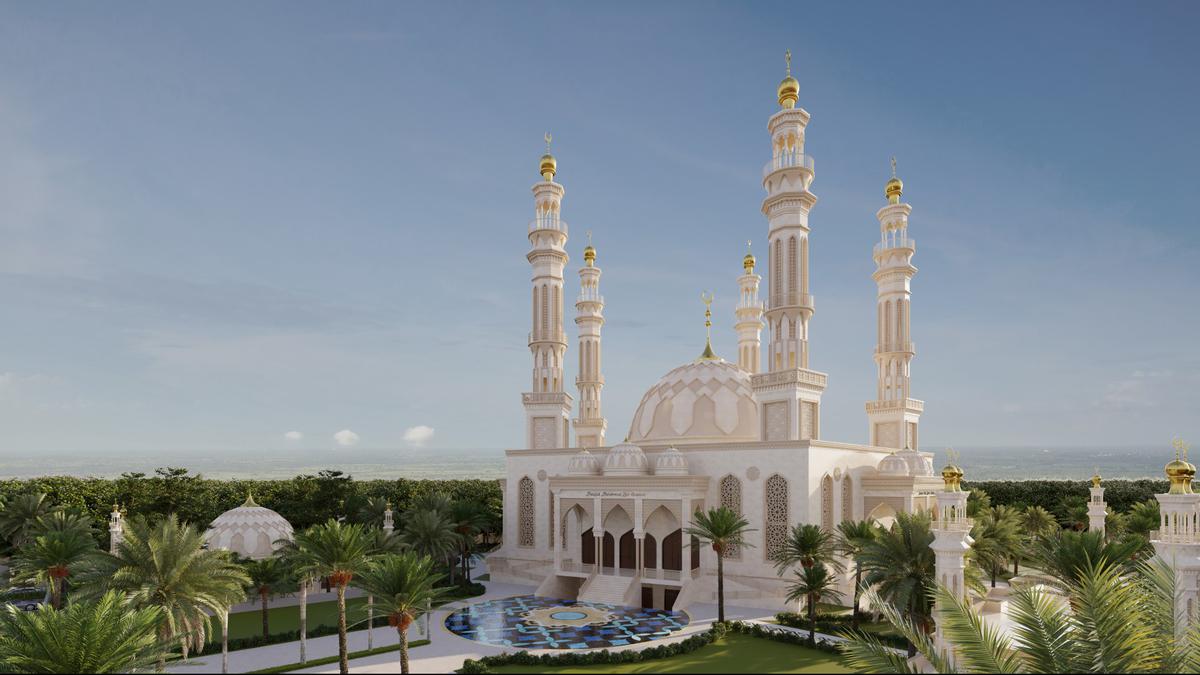
Ayodhya mosque to be ‘better than the Taj Mahal’
The Hindu
Indo-Islamic Cultural Foundation, the trust overseeing the construction of the mosque in Ayodhya, aims at building one of India’s biggest mosques, which will host the world’s biggest Quran
The Indo-Islamic Cultural Foundation (IICF), the trust overseeing the construction of the mosque in Ayodhya, has decided to try a different approach to funding the project that has not taken off yet due to paucity of money and administrative delays. They will relaunch the effort, this time with the vigour and pomp of the Ram temple. Taking the lead is the new chief of the mosque’s development committee, appointed in November 2023, Haji Arfat Shaikh, a Bharatiya Janata Party (BJP) leader from Maharashtra.
Earlier, the plan, by Prof. S.M. Akhtar, the founder dean of the faculty of architecture at Delhi’s Jamia Millia Islamia University, had included a hospital, community kitchen, library, and a research centre, across 4,500 square metres. Now, the aim is to build one of the biggest mosques of India, “better than the Taj Mahal”, along with “the world’s biggest Quran that will measure about 21 feet”, says Mr. Shaikh.
“The earlier design looked like an eggshell, and not at all like a mosque,” he said, of the zero-carbon-footprint design, adding that the new design, prepared by a Pune-based architect, Imran Shaikh, will be ready by the end of February. While the hospital and community kitchen will be retained, other features had been introduced.
It will also be the first mosque in India to have five minars. A water-and-light show is also being planned. The Uttar Pradesh government organises one at the Sarayu river ghat in Ayodhya, where the Ramayana plays out every evening. “We will have water playing in sync with the azan (prayers) inside the mosque. The lights of the mosque will come on at sunset and go off at sunrise automatically. We will also have a giant fish aquarium, bigger than that of Dubai, for the youth,” said Mr. Shaikh.
The mosque had been allotted the five-acre plot 25 km away from the heart of Ayodhya, in Dhannipur, in February 2020. The Supreme Court, in November 2019, had given way to the construction of the temple in Ayodhya, at the site where Hindu fundamentalists had brought down the 16th century Babri Masjid in December 1992.
Mr. Shaikh sees construction of the expanded vision begin in the second half of 2024, after Ramzan. “A brick with verses of the Quran inscribed over it will travel to Madina in the Kingdom of Saudi Arabia (KSA) and to prominent dargahs across India,” he said, adding that it will finally be laid at the site.

The Karnataka government has drafted a comprehensive master plan for the integrated development of Kukke Subrahmanya temple, the State’s highest revenue-generating temple managed by the Hindu Religious Institutions and Charitable Endowments Department. The redevelopment initiative is estimated to cost around ₹254 crore and aims to enhance infrastructure and facilities for devotees.












